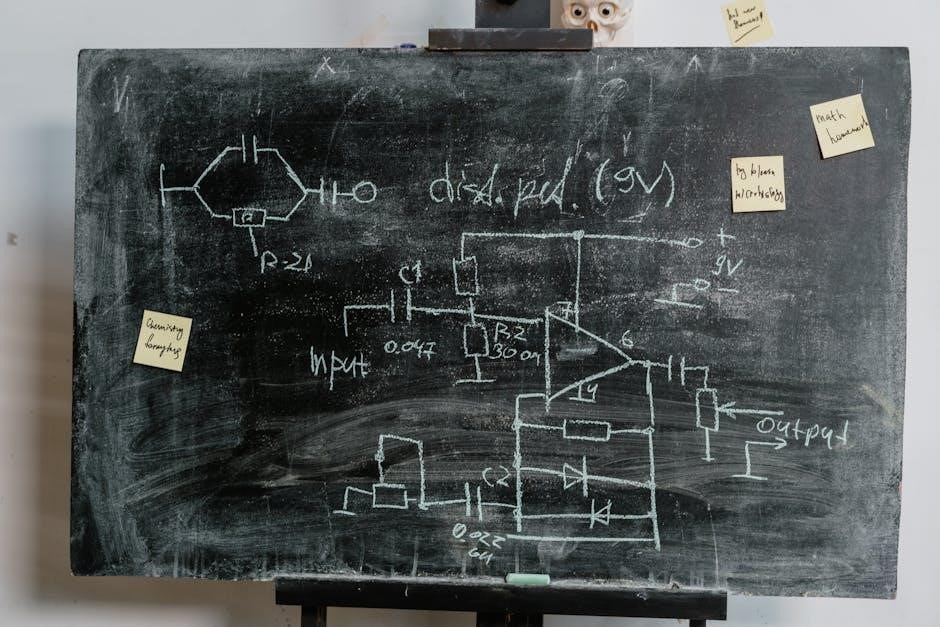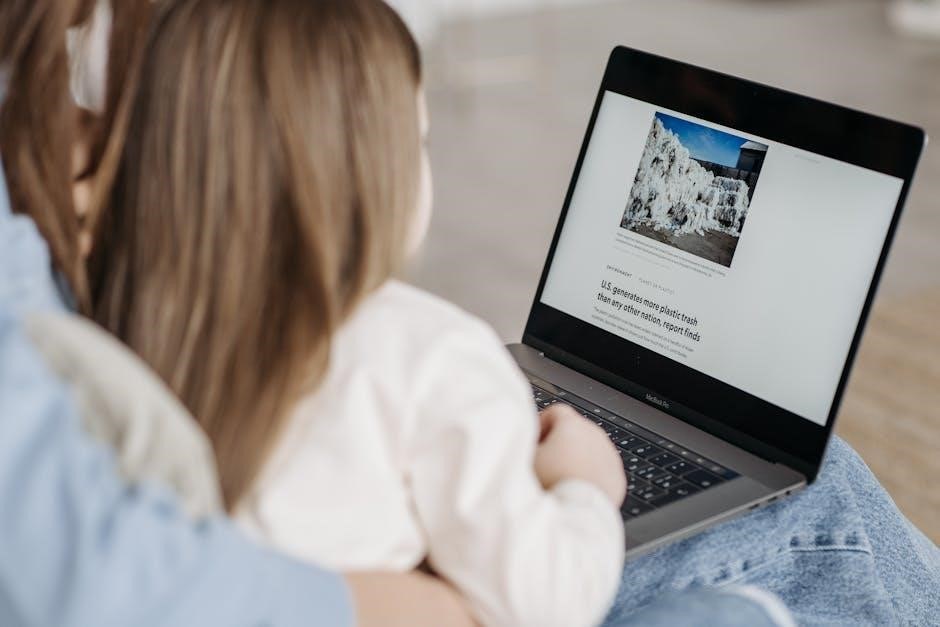Instructional technology and media for learning enhances student learning experience with digital devices and web tools, improving learning engagement and outcomes effectively always online now.
Overview of the Importance of Technology in Education
Technology plays a vital role in education, enhancing the learning experience and improving outcomes. The internet provides a wealth of information, and digital tools enable students to engage with content in innovative ways. Effective integration of technology into the classroom can increase student motivation and participation, leading to better academic performance. Furthermore, technology facilitates communication and collaboration among students, teachers, and parents, promoting a sense of community and shared learning. The importance of technology in education cannot be overstated, as it has the potential to transform the way we teach and learn, making education more accessible, effective, and enjoyable for all. By leveraging technology, educators can create personalized learning experiences, assess student progress, and provide feedback, ultimately leading to improved student achievement and success. Overall, technology is essential for modern education, and its importance will continue to grow in the future.
Role of Media in Enhancing Student Learning Experience
The role of media in enhancing student learning experience is significant, as it provides an engaging and interactive way to present information. Media formats such as videos, images, and audio can convey complex concepts in a more accessible and memorable way. By incorporating media into instruction, educators can cater to different learning styles, making learning more effective and enjoyable. Media can also facilitate real-world connections, allowing students to explore and interact with authentic scenarios and examples. Additionally, media can be used to promote critical thinking, problem-solving, and creativity, essential skills for success in the 21st century. Overall, the strategic use of media can enhance student learning experience, increase motivation, and improve academic achievement, making it an essential component of instructional technology and media for learning, with various media formats available to support teaching and learning. Media resources are widely available and can be easily integrated into lesson plans.

Designing Instruction and Assessing Learning
Designing instruction and assessing learning involves planning and evaluating instructional technology and media for effective learning outcomes always using online resources and tools effectively now.
Using the ASSURE Lesson Plan Model for Effective Instruction
The ASSURE lesson plan model is a framework for designing effective instruction that incorporates instructional technology and media. This model involves analyzing the learner, stating objectives, selecting media and materials, utilizing media and materials, requiring learner participation, and evaluating and revising instruction. By using the ASSURE model, instructors can create a comprehensive lesson plan that integrates technology and media to enhance student learning. The model provides a structured approach to instructional design, ensuring that all aspects of the learning process are considered. Instructors can use the ASSURE model to develop engaging and interactive lessons that meet the diverse needs of their students. The model is widely used in educational settings and has been shown to be effective in improving student learning outcomes. It is a valuable tool for instructors who want to create effective and engaging instruction that incorporates instructional technology and media.
Integrating Technology and Media into Instruction for Better Learning Outcomes
Integrating technology and media into instruction is crucial for improving learning outcomes. This involves using a variety of digital tools and media formats to support teaching and learning. By incorporating technology and media, instructors can create engaging and interactive lessons that cater to different learning styles. The use of digital devices and web-based tools can also facilitate collaboration and communication among students. Moreover, technology and media can provide access to a wealth of educational resources and information, enabling students to learn more effectively. Effective integration of technology and media requires careful planning and consideration of the learning objectives and outcomes. Instructors must also ensure that the technology and media used are aligned with the curriculum and are accessible to all students. By doing so, instructors can create a learning environment that is supportive, inclusive, and conducive to better learning outcomes. This approach can lead to improved student achievement and success.

Instructional Media and Technologies for Learning
Instructional media and technologies support learning with various formats and tools, enhancing education always online now effectively.
Exploring Different Media Formats for Classroom Instruction
Exploring different media formats for classroom instruction is crucial for effective learning, and various formats such as videos, audio, and images can be used to enhance student engagement and understanding.
These media formats can be integrated into lesson plans to support different learning styles and abilities, and to make learning more interactive and fun.
Teachers can use media formats to present information, demonstrate concepts, and provide feedback to students, and to facilitate collaboration and communication among students.
The use of media formats in classroom instruction can also help to increase student motivation and participation, and to improve learning outcomes.
Moreover, media formats can be used to support diverse learning needs, such as for students with disabilities, and to provide opportunities for students to learn at their own pace.
Overall, exploring different media formats for classroom instruction can help teachers to create a more engaging, interactive, and effective learning environment for their students.
Applying the ASSURE Model for Integrating Media into Lesson Planning
The ASSURE model is a framework for integrating media into lesson planning, and it involves several steps to ensure effective integration.
First, analyze the learner and learning objectives to determine the appropriate media to use.
Next, select the media and materials that align with the learning objectives and learner needs.
Then, utilize the media and materials in the lesson plan, and require learners to use the media to achieve the learning objectives.
The ASSURE model also involves evaluating the effectiveness of the media integration and revising the lesson plan as needed.
By applying the ASSURE model, teachers can ensure that media is integrated into lesson planning in a way that supports learning objectives and engages learners.
This model helps teachers to make informed decisions about media integration and to create effective lesson plans that promote learning.

Enhancing Learning with Digital Devices and Web 2.0 Tools
Digital devices and web tools enhance learning with interactive content and collaborative features always online now effectively.
Engaging Learners with Digital Devices for Improved Learning Engagement
Using digital devices in the classroom can significantly enhance student engagement and motivation, as they provide interactive and immersive learning experiences.
With the use of digital devices, students can access a wide range of educational resources and tools, such as educational apps, games, and simulations, that make learning fun and engaging.
Digital devices also enable students to collaborate and interact with their peers, promoting social learning and teamwork.
Additionally, digital devices provide teachers with the ability to track student progress and provide personalized feedback, helping to identify areas where students need extra support.
Overall, the use of digital devices in the classroom has the potential to improve learning outcomes and increase student engagement, making them a valuable tool for educators.
The effective integration of digital devices into the classroom requires careful planning and implementation, but the benefits to student learning and engagement make it a worthwhile investment.
By leveraging digital devices, educators can create a more engaging and effective learning environment that prepares students for success in the digital age.
Connecting Learners Using Web 2.0 Tools for Collaborative Learning
Web 2.0 tools provide a platform for collaborative learning, enabling students to connect and interact with each other in a virtual environment.
These tools include social media, online forums, and wikis, which facilitate communication, sharing, and cooperation among students.
By using Web 2.0 tools, students can work together on projects, share resources, and provide feedback, promoting a sense of community and teamwork.
This collaborative approach to learning helps to develop essential skills, such as communication, problem-solving, and critical thinking.
Web 2.0 tools also enable students to access a wide range of educational resources, including online tutorials, videos, and podcasts, which can be shared and discussed with peers.
The use of Web 2.0 tools in education has the potential to enhance student learning outcomes, increase engagement, and prepare students for success in a rapidly changing, technology-driven world, with new opportunities for collaboration and connection.
Overall, Web 2.0 tools offer a powerful means of connecting learners and promoting collaborative learning, with numerous benefits for students and educators alike, every day.

Teaching at a Distance and Enhancing Learning with Artificial Intelligence
Teaching at a distance has become increasingly popular, with the use of digital technologies to deliver instruction to students remotely.
This approach to education has the potential to increase access to learning opportunities, particularly for students who may be geographically isolated or have other barriers to participation.
Artificial intelligence is also being used to enhance learning, with applications such as personalized learning systems and intelligent tutoring systems.
These systems use data and analytics to tailor instruction to the needs of individual students, providing real-time feedback and support.
The use of artificial intelligence in education has the potential to improve student learning outcomes, increase efficiency, and reduce costs.
Overall, the combination of distance teaching and artificial intelligence has the potential to transform the education sector, providing new opportunities for learners and educators alike, and improving the overall quality of education, with significant benefits for all stakeholders involved, every day.
Distance teaching and artificial intelligence are changing the way we learn and teach, with new technologies and innovations emerging all the time, to enhance learning experiences.
